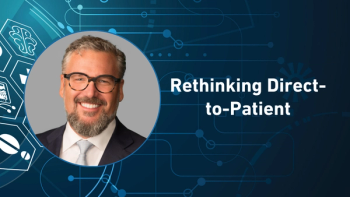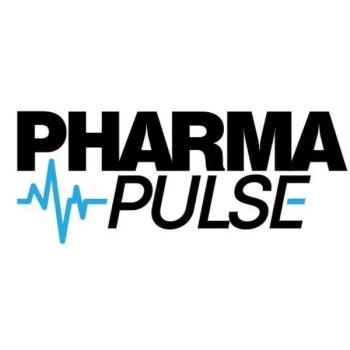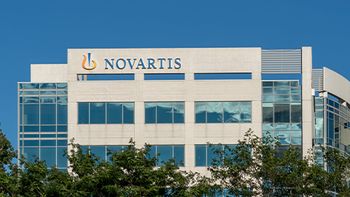
- Pharmaceutical Commerce - April 2010
True Software-as-a-Service (SaaS) Transforms Sales Automation Systems to Make Upgrades Painless
Multi-tenant sales-force automation (SFA) systems are coping with an increasingly complex regulatory environment
System upgrades are a fact of life in the life sciences industry. Things are always changing, evolving, and growing so your systems must adapt accordingly or they become obsolete … just like so many aging client/server SFA systems that are still dragging along at many organizations today. Of course these vendors upgrade their systems, too. For many like Siebel and Oracle, upgrades occur once every 24 months (too slow), take 6-18 months to implement (too long), and cost between $2-7 million (too much). In fact, client/server vendors often have 20+ different versions to support — all of which steal the vendor’s focus from innovating new features and functionality.
A SaaS CRM system “in the cloud” delivers all of the advantages of upgrades like improved performance, enhanced functionality, and always compliant business rules & reports but without the grueling upgrade process. It’s painless. The multi-tenant architecture enables frequent upgrades yet saves companies millions of dollars a year, enables better vendor support because everyone is working on the same version, helps keep companies compliant amidst a changing regulatory environment, delivers important new functionality and performance improvements, and gives the company the freedom to change platforms as needed.
The frequency of upgrades for multi-tenant CRM systems in the cloud is virtually unlimited—typically at least every 90 days. It benefits every customer—large and small—and all of their users, regardless of whether there are five or 5,000. Like traditional technologies, multi-tenant SaaS CRM upgrade enhancements are based on feedback from customers as well as ongoing research and innovation from the vendor’s development team. But, these enhancements are automatically and transparently pushed out to users via the Web. Customers have the option to turn the new functionality on or off based on their own timelines and needs, but it’s made available to them every time.
All mobile users also benefit from upgrades simultaneously, proving a monumental advantage over the upgrade process on mobile devices with traditional software. All users’ tablet PCs and laptops are upgraded automatically when the users sync—it takes just seconds. With traditional software, remote upgrades can take months to complete. At worst, sales representatives must ship their tablets to corporate so the IT staff can install the upgraded software on each laptop/tablet individually. More often than not, some sales reps never take the time to get the upgrade so IT must deal with the challenges of reps who are working on different versions of the same application.
The five most common reasons traditional vendors force customers to endure a painful upgrade are:
- To avoid a vendor-imposed increase in maintenance fees
- To switch to a new software platform such as Microsoft Windows 7
- To switch/add new hardware such as a Net Book or an iPhone
- To meet new business or compliance requirements
- To access new functionality not available in the current release.
The table at left shows comparative costs for a hosted vs multi-tenant SaaS upgrade when undertaking an application patch or a full-blown system upgrade.
In contrast, all multi-tenant CRM customers benefit from the following:
- Cost Savings—customers never pay a dime to move from release to release. (See Table 2 for a cost comparison).
- Higher Quality—as bugs are detected, they are fixed, and provided to all users immediately … no waiting for patches to be released.
- Better Performance—performance tuning can occur much more frequently because the vendor only has to work on a single instance of the application, allowing for shorter release cycles
- Higher Rate of Innovation—rather than spending time supporting and patching dozens of old releases, SaaS vendors can focus entirely on innovative development.
- Improved Support—with just one instance of an application running at all times, a multi-tenant SaaS vendor support team is always looking at the same version as the customer for improved service.
SaaS resolves compliance issues
There are many reasons why life sciences companies want to upgrade their CRM or SFA systems—from enhanced functionality that lead to improved business processes to avoiding paying increased maintenance fees from the vendor. But, possibly the most critical reason that pharmaceutical organizations need to upgrade their software is due to continuously changing federal and state regulations … or, more important, changing levels of enforcement of these regulations.
Here are three common compliance challenges where SaaS upgrades make an impact:
1. Off-label product promotion compliance: Who can forget Big Pharma’s painful interaction with the federal government over off-label product promotion in late 2009? Certainly not Pfizer, AstraZeneca and Eli Lilly who were each slammed with hefty fines. According to the Wall Street Journal, AstraZeneca is set to pay $520 million on its antipsychotic Seroquel claims, which is just a fraction of the $1.3 billion Eli Lilly settlement and the $2.3 billion Pfizer settlement. In this case, the regulations were not new however the tighter government scrutiny applied was.
Pfizer, for one, is now remedying the problem by providing its sales representatives with new tools driven by flexible technology. For example, a multi-tenant SaaS CRM system will drive reps’ tablet PCs and include parameters that will help ensure reps are appropriately distributing drug samples, discussing products, and handling physician requests for medical information. The new system will guide the salesperson when detailing products so that he or she knows exactly what information can be communicated to which physicians, what samples can be signed for, and what content can be shown to a given physician based on the physician’s specialty and the approved uses of Pfizer’s medicines. Because the new system utilizes the cloud computing model, all of this information can be changed as often as needed to reflect changes in compliance regulations.
2. System validation for samples management: Samples management is another area where an easily upgradable system can be life-saving for a life sciences company. Veeva System’s Veeva CRM suite is the only CRM application pre-validated for PDMA and the Food and Drug Administration’s CFR Part 11 compliance requirements. It comes with complete IQ and OQ documentation for safe sampling.
Veeva partners with QPharma, Inc., a leader in regulatory compliance consulting services to the life sciences industry, to handle validation before the CRM application is in use, saving customers up to 80% of system validation costs. Possibly more important, ongoing validation reduces the risk of life sciences customers being issued a damaging consent decree from the federal government. The product’s multi-tenant SaaS architecture enables the vendor to routinely check, re-validate any changes, and upgrade all users simultaneously. Again, the updates are free.
“The consequences of not properly validating your system can be devastating,” said Patrick Den Boer, CEO of QPharma. “At the worst, a company could enter into a consent decree costing the organization millions of dollars in fines, and even forcing the facility to shut down.”
3. Aggregate state spend regulations: Last year, a handful of states enacted legislation mandating life sciences companies track and disclose their sales and marketing expenditures at the physician level; more states are legislating their own versions. Each of these states has different reporting requirements and defines spending in different ways.
For example, Vermont may require you to record clinical grants while Massachusetts does not. Minnesota, Pennsylvania, and Florida may all set different dollar limits on what sales reps can spend to entertain a physician in that state. When these rules change (and they will, over and over again), a life sciences company will need to have a system flexible enough to make the necessary changes to remain compliant from state to state and month to month. The proposed Federal Physician Payments Sunshine Act will likely force companies to manage aggregate spend compliance on both the state and national levels as well.
A true multi-tenant SaaS solution can cost-effectively support this constantly shifting, complex regulatory environment. Automatic upgrades ensure that life sciences companies will always have the most up-to-date business rules and reports for state spend compliance. No other technology offers this level of flexibility.
Behind the technology
There’s only one technology that can enable behind-the-scenes application upgrades—multi-tenant SaaS. Multi-tenancy is the architectural model that allows pharmaceutical SaaS CRM vendors—vendors with applications running ‘in the cloud’—to serve multiple customers from a single, shared instance of the application. In other words, only one version of an application is deployed to all customers who share a single, common infrastructure and base code that is centrally maintained. No one customer has access to another’s data and each can configure their own instance of the application to meet their specific needs.
How is this possible? The multi-tenant architectures provide a boundary between the platform and the applications that run on it, making it possible to create applications with logic that’s independent of the data it controls. So, instead of hard-coding data tables and page layouts, users define attributes and behaviors as metadata that functions as the application’s logical ‘blueprint.’
In contrast to common client/server applications, users in multi-tenant applications such as salesforce.com, Google Mail, and eBay all share the same physical instance and version of an application. Individual deployments of those applications occupy virtual partitions rather than separate physical stacks of hardware and software. These partitions store the metadata that defines each organization’s business rules, fields used, custom objects, and interfaces to other systems. In addition to an application’s metadata, these virtual partitions also store custom code, ensuring that any potential problems with that code will not affect other customers, and preventing bad code associated with one object from affecting any other aspects of an individual customer’s application. This approach makes it possible for administrators to customize or change the application as often as needed using simple point-and-click tools.
Most vendors that advertise themselves as a “hosted service” simply charge customers to install, configure, and maintain their software as separate customer instances on the vendor’s hardware and at the vendor’s location. They abuse the term SaaS by referring to the fact that their application can be accessed over an Internet connection. However, just as with traditional software, these hosted services incur major expenses each time the software is upgraded. The application must still be redeployed for each customer, and previous customizations are lost as are the shared economies of scale that are enjoyed with multi-tenant SaaS.
According to PricewaterhouseCoopers’ Health Research Institute’s Top 10 Health Industry Issues for 2010, new technology adoption ranks #5 for the year ahead. If you’re one of the many companies preparing for the future by adopting new technologies this year, think beyond just initial, out-of-the-box functionality and consider long-term system requirements. Upgrades—which typically account for one of the largest IT expenditures—are necessary, but no longer have to be a necessary evil. Make sure your system is built on an architecture that can make this process as painless as possible. PC
BOX: Five Ways to Spot a Fake
So, how can you decipher all of the terminology to ensure that you are purchasing true SaaS? Ask the vendor these important questions:
How many versions of the application does the vendor maintain and how many instances of the app?
How are customizations handled?
What is the limit on the number of custom objects that can be created?
How long does it take to do an upgrade — including mobile users? How many upgrades are done a year and how much do they cost?
Is the application scalable both up and down as often as is necessary without extra costs?
ABOUT THE AUTHOR
Matt Wallach is EVP and GM at Veeva Systems (veevasystems.com), which is now the leading SaaS CRM provider in the market with six of the top 10 pharma companies as clients. Previously, he was chief marketing Officer at Health Market Science, and spent six years at Siebel Systems, where he was GM of the pharma and biotechnology division. He received his MBA from Harvard Business School and his BA in economics from Yale University.
Articles in this issue
over 15 years ago
PBMs contact Congress over proposed USPS five-day delivery scheduleover 15 years ago
FDA puts a spotlight on cargo theft of life sciences productsover 15 years ago
New study sets benchmark for post-marketing surveillance processNewsletter
Stay ahead in the life sciences industry with Pharmaceutical Commerce, the latest news, trends, and strategies in drug distribution, commercialization, and market access.




